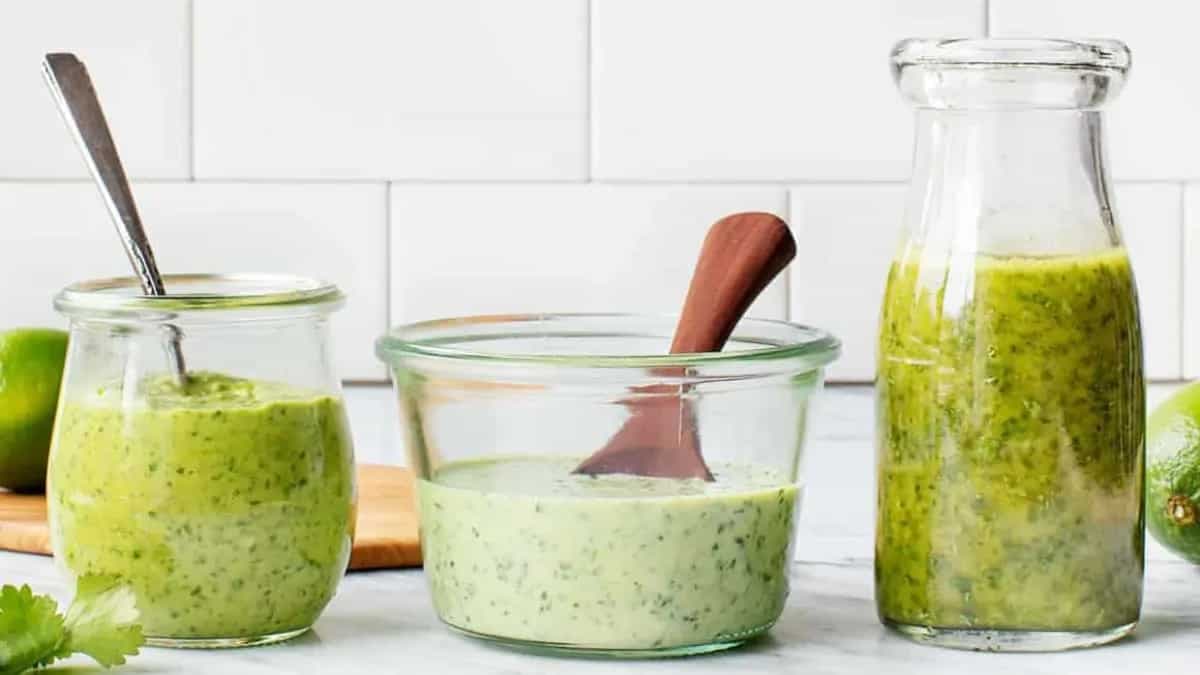Depending on the kind of ingredients you use to toss up a salad, the characteristics of your salad dressing will change. Case in point, if you’re making a kale salad, tossing it in an acid-based dressing will not only tenderize the leaves but also cut through its sharp bitterness. However, using tender greens like baby spinach or lettuce might call for a less acidic, sweeter dressing to accentuate the flavours of the ingredients. Although creamy dressings are mostly passe now, using a great salad dressing is a combination of a handful of factors that elevate your bowl of health like no other. Read on.
The Perfect Vinaigrette

Essentially a vinaigrette has two main componenets – fat (olive oil, avocado oil) and acid (typically vinegar or citrus). Based off of the salad you plan on making, a classic vinaigrette dressing is usually three parts fat to one part acid; in the case of dense leafy greens, thick-cut vegetables, etc. However, if you’re roasting vegetables or protein to add to your salad, stick to a two parts fat and one part acid ratio.
The Right Oil
While olive oil is the most obvious choice for a salad dressing, to some, it might feel too pungent or overpowering. In that case, using a flavourless oil like avocado oil or a mildly flavoured one like sesame oil or walnut oil would work just fine. Adding or mellowing the flavour of the fat in your salad will also depend on how robustly flavoured the other components are, so try and navigate your preferences accordingly.
Also Read:
Acidic Punch
The various options of acidic elements for salad dressings have widened over the years so pick your vinegar or citrus based off of exactly the kind of acidic flavours you’re looking for. Stick to lemon or lime juice for everyday salads whereas you can invest in fancier options like white wine or rice vinegar for salads that are consciously created to be part of a meal. Other options also include tomato juice, apple cider vinegar, stone-ground mustard and even orange juice, if you’re looking for something slightly sweeter.
Amp Up The Flavour

Image Credits: Love And Lemons
In short, add herbs, garlic, anchovies, capers, lemon zest or even chopped shallots for that extra hit of flavour to your dressing. Yes, we agree that it is a bit of an effort to go the extra mile in mincing some garlic or taking a few minutes to chop your chillies as fine as possible, but the promise of a delicious salad awaits at the end of your efforts and you’re sure to reap the rewards of it.
Add Body
Want a thicker salad dressing? Simply emulsify your fat and acid to give it a creamy texture. Avoid adding mayonnaise to your dressings as much as possible and use lighter options like buttermilk, sour cream, tahini or heavy cream to add weight as well as thicken your dressing further. Mayonnaise tends to swathe everything it comes in contact with and dim the flavours that already exist, making the salad gloopy instead of it retaining its crisp freshness.


